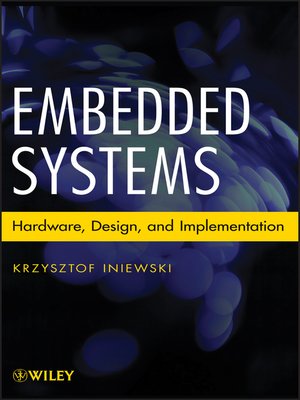
Sign up to save your library
With an OverDrive account, you can save your favorite libraries for at-a-glance information about availability. Find out more about OverDrive accounts.
Find this title in Libby, the library reading app by OverDrive.



Search for a digital library with this title
Title found at these libraries:
| Loading... |
Covers the significant embedded computing technologieshighlighting their applications in wireless communication and computing power
An embedded system is a computer system designed for specific control functions within a larger systemoften with real-time computing constraints. It is embedded as part of a complete device often including hardware and mechanical parts. Presented in three parts, Embedded Systems: Hardware, Design, and Implementation provides readers with an immersive introduction to this rapidly growing segment of the computer industry.
Acknowledging the fact that embedded systems control many of today's most common devices such as smart phones, PC tablets, as well as hardware embedded in cars, TVs, and even refrigerators and heating systems, the book starts with a basic introduction to embedded computing systems. It hones in on system-on-a-chip (SoC), multiprocessor system-on-chip (MPSoC), and network-on-chip (NoC). It then covers on-chip integration of software and custom hardware accelerators, as well as fabric flexibility, custom architectures, and the multiple I/O standards that facilitate PCB integration.
Next, it focuses on the technologies associated with embedded computing systems, going over the basics of field-programmable gate array (FPGA), digital signal processing (DSP) and application-specific integrated circuit (ASIC) technology, architectural support for on-chip integration of custom accelerators with processors, and O/S support for these systems.
Finally, it offers full details on architecture, testability, and computer-aided design (CAD) support for embedded systems, soft processors, heterogeneous resources, and on-chip storage before concluding with coverage of software supportin particular, O/S Linux.
Embedded Systems: Hardware, Design, and Implementation is an ideal book for design engineers looking to optimize and reduce the size and cost of embedded system products and increase their reliability and performance.






